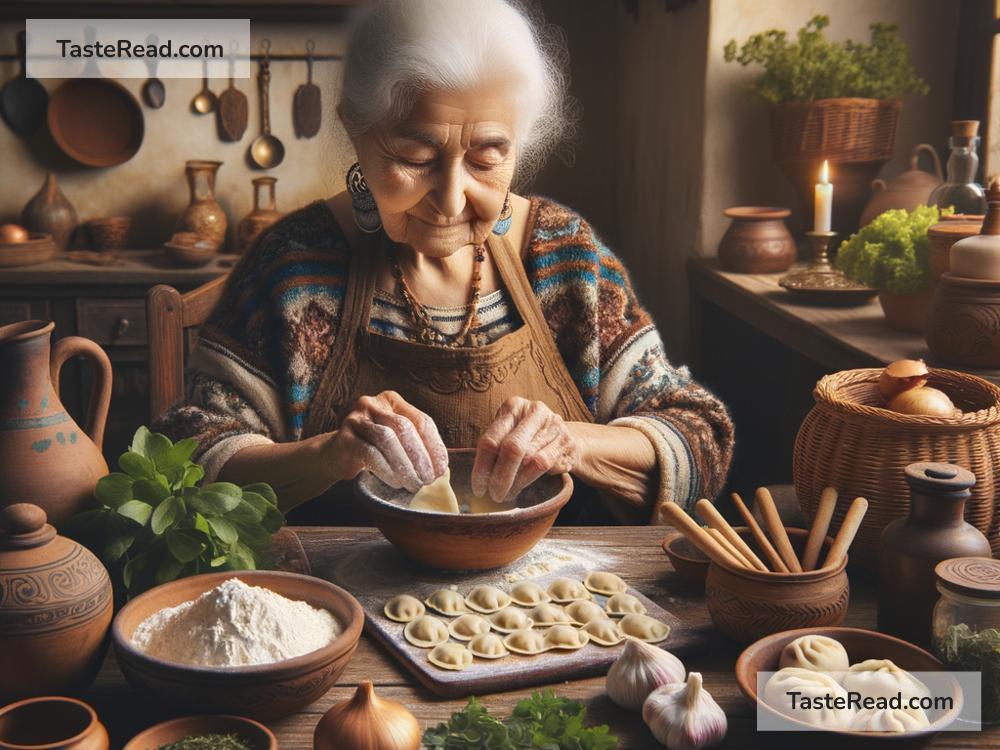The Origin Story of the First Dumpling
Dumplings are one of the most delicious and famous foods in the world. Whether steamed, boiled, fried, or baked, dumplings can be found in nearly every culture, from Asia to Europe to the Americas. But have you ever wondered where the first dumpling came from? Who made it, and why? The answer to these questions takes us back hundreds of years to ancient China, where the dumpling’s fascinating story begins.
The Hero Behind the Dumpling
According to legend, the dumpling was first created by a man named Zhang Zhongjing, a famous doctor in Chinese history. Zhang Zhongjing lived during the Eastern Han Dynasty, which ruled China over 1,800 years ago, between 25 AD and 220 AD. Zhang was not only an expert in treating illnesses but also deeply cared about helping people live better lives. His knowledge and compassion earned him great respect, and his ideas influenced traditional Chinese medicine for centuries.
One winter, Zhang Zhongjing returned to his hometown after spending many years traveling across China and helping people. When he arrived, he was shocked to see that many villagers were suffering from the harsh cold weather. People’s cheeks and ears had become frostbitten due to the freezing winds, and many of them were weak and hungry. Zhang wanted to do something to help heal their frostbite and keep them warm.
A Creative Cure
Zhang Zhongjing had an idea. He decided to combine his knowledge of food and medicine to create something special—a dish that could help the villagers fight the cold. He mixed minced lamb, herbs, and spices that were known for their warming properties. To make it easy to eat and cook, he wrapped the filling in small pieces of dough shaped like tiny ears.
These dough pockets served two purposes. First, the herbs and lamb provided nutrients and warmth to the body. Second, the shape of the dumplings symbolically “healed” frostbitten ears, as they resembled little ear-like shapes. Zhang then boiled the dumplings in a flavorful soup to make them soft and easy to eat, and he gave them out to the villagers.
The results were amazing! Not only were the villagers warmed and nourished, but their frostbite began to heal. People praised Zhang for his creativity and kindness, and the dumplings quickly became a favorite food in the community.
The Spread of Dumplings
Zhang Zhongjing’s invention soon became famous beyond his hometown. Over time, people started making dumplings for different occasions, like holidays, family gatherings, and celebrations. Dumplings became a symbol of togetherness and happiness, as their small size made them perfect for sharing with loved ones.
As dumpling-making spread to other regions, people began creating new variations by using different fillings, cooking methods, and seasonings. In northern China, people often made dumplings with pork, cabbage, or green onions, while people in southern China experimented with shrimp, mushrooms, and even sweet fillings like red bean paste. Dumplings also became a popular dish during the Chinese New Year, symbolizing wealth and good fortune because their shape resembles gold ingots, ancient currency used in China.
Dumplings Around the World
While the story of the first dumpling began in China, the idea of wrapping food in dough spread to other parts of the world over time. Today, dumplings can be found in almost every culture, and each country has its own version.
In Japan, dumplings became gyoza—crispy fried pockets filled with meat and vegetables, inspired by Chinese jiaozi. In Korea, mandu dumplings are a popular dish during family celebrations. In India, there are momos, which are steamed dumplings often filled with spicy vegetables or meat.
Europe also has its dumpling tradition. In Eastern Europe, pierogies are loved for their hearty potato, cheese, or meat fillings. Italians make ravioli, small squares of pasta stuffed with cheese or other ingredients. Even in the Americas, empanadas and tamales resemble dumplings, using corn dough to hold flavorful fillings.
A Timeless Dish
Though dumplings have changed and evolved over the centuries, they remain a timeless and beloved food with a heartwarming origin story. Zhang Zhongjing might not have known it at the time, but his creative idea to heal frostbite and hunger turned into something so much more—a food that connects people across generations and cultures.
The next time you enjoy a plate of dumplings, think about the story of Zhang Zhongjing and his kindness during that cold winter. Dumplings are not just a tasty treat; they are bites of history, a reminder of how one person’s creativity and compassion can leave a lasting impact on the world.
So, whether you’re sitting down to eat dumplings with family during the holidays or just grabbing some with friends at a local restaurant, remember that you’re taking part in a tradition that began nearly 2,000 years ago. From ancient China to your plate today, dumplings are proof that great food always has a great story behind it.
Conclusion
The origin of dumplings is not just about food; it’s about kindness, creativity, and connection. Zhang Zhongjing’s invention reminds us that food can heal and bring people together. And while the dumpling may have started in one small village in China, it has grown into a global dish loved by millions. Any time you eat a dumpling, you’re savoring a little piece of history—and a whole lot of flavor!


